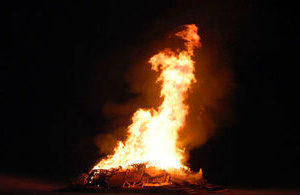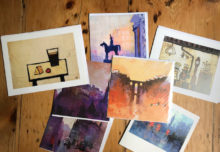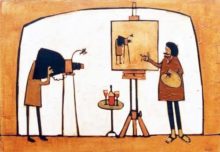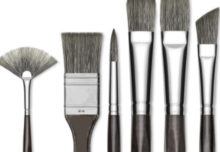
A while back I wrote a blog about a bonfire. I said that I was going to destroy some of my artwork.
Why?
Over many years as a full-time professional artist I have created a lot of art-work and sold most of it … thank goodness. But there are some pieces that didn’t sell. So I might have to burn them because it is difficult to store them.
This problem applies to many other artists as well.
What can we all learn from this?
Here are three obvious questions.
- Why didn’t the art sell?
- Why did the artist make them in the first place?
- What do they do next?
Why didn’t the art sell?
The most obvious answer is the artist wanted to keep them, or that no-one else wanted them.
Or it might have been poor selling technique, or the price, or the quality of the art.
Loads of things might have gone wrong.
Why did the artist make them in the first place?
There is a strong possibility that the artist made them because they like making art. We do like experimenting and exploring new and different creative ways of making art.
However if we made the art and tried to sell it, and it didn’t, then we want to know why so that we can do better in the future.
Did we over-produce for an exhibition? Extra pieces are good as back-up stock and are useful to widen the range of a possible collectors interest. It is better to slightly over-produce so that sales are not lost, rather than under-produce just to keep costs down. That is a factor that can be hard to get right.
What does the artist do next?
Lesson one. Get the price right. Tricky. It is crucial to show the benefits and value for money to potential collectors where possible.
Many artists ‘under-price’ because they don’t need to make enough profit to live on. Maybe they are hobby artists. But that doesn’t apply to all of us. Many do not have another job, or a wealthy spouse, or a large inheritance. Sigh!
But it is just as easy to make your art too expensive. After all a professional artist is competing with all those other artists who are ‘under-pricing’.
Lesson two. Get better at selling. That usually means being better at telling people first, and then selling. Being efficient and avoid wasting everybody’s time by not having the best procedure.
We should try to do as much as possible ourselves so that dealers don’t push the prices up and take the lion’s share.
Lesson three. Keep up the quality of the product. Good quality materials, lightfast inks and fine-art paper for prints, are examples.
But why is this blog post called ‘Another Bonfire’?
Because … Lesson four…
There is a constant need to clear the studio of extra artworks that didn’t sell.
There are always examples of over production that can happen in an artist’s system.
So do we keep storing them, or find buyers who want these art pieces, or something else?
Option one… Keep on storing more and more of them becomes more and more inconvenient and inefficient. Stop doing that.
Option two, is to over-paint, or destroy. (Destroy!? That is the bonfire that I wrote about in the previous blog.)
Option three, is to sell them.
Obviously we all prefer option three.
So I am going to delay another bonfire and give the art pieces a last chance to find a good home.
Luckily, I do have a special group of inner-circle collectors and fans who are keen to help out when the price and value is right.
So please let me know if you are interested.




